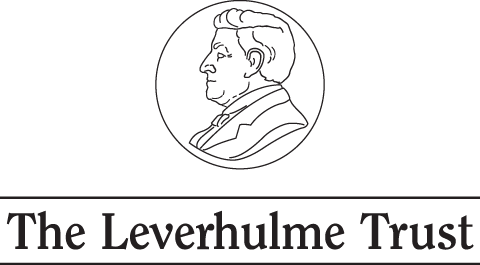 Eva Palmer Sikelianos (1884-1951) cuts a deeply impressive figure in cultural life of 1920s-1950s Greece, with her long, fire-red hair, ancient clothing, and ground-breaking perception of the classical world.[1] Born in New York City to Courtland Palmer Sr, an intellectual who founded the Nineteenth Century Club, and Catherine Amory Bennet, she was encouraged, along with her four siblings, to pursue the arts and liberal thought.[2] Left to pursue her own interests, she became enthralled by Greek choral arrangements – and it was this early interest that led her to Greece.
Eva Palmer Sikelianos (1884-1951) cuts a deeply impressive figure in cultural life of 1920s-1950s Greece, with her long, fire-red hair, ancient clothing, and ground-breaking perception of the classical world.[1] Born in New York City to Courtland Palmer Sr, an intellectual who founded the Nineteenth Century Club, and Catherine Amory Bennet, she was encouraged, along with her four siblings, to pursue the arts and liberal thought.[2] Left to pursue her own interests, she became enthralled by Greek choral arrangements – and it was this early interest that led her to Greece.
After schooling, she settled in Paris, where she pursued a casual acting career with her lover, Natalie Barney (1875-1972), the patron of a renowned literary saloon, who referred to Eva as a ‘medieval virgin’, due to her hair and pale complexion.[3] While with Barney, she became acquainted with Raymond Duncan (1874-1966), brother of Isadora Duncan, and his wife, Penelope.[4] Together with the Duncans, she learnt how to make traditional ancient Greek dress – something which she wore for the rest of her life – and then moved to Hyrnettos in Greece, where, soon enough, she was introduced to Penelope’s brother, the renowned Greek poet and playwright, Angelos Sikelianos (1884-1951).[5]
Eva and Sikelianos were inseparable. In 1907 they travelled back to Eva’s native America to get married, encountering heavy press interest, with the newspapers being scandalised by her chitons (ancient Greek dresses) and making up false stories about her personal life.[6] After their marriage, they returned to Athens, where Eva gave birth to their only child, Glafkos, and began studying Greek Ecclesiastical Music under Konstantinos Psachos (1869-1949).[7]
Takis Dimopoulos, a good friend of Angelos and Eva, compared Eva to Penelope in Homer’s Odyssey, as she waited for Sikelianos to return from his travels in Egypt so that they could marry.[8] However, the relationship was not to last, deteriorating with Eva’s absence in the USA as she tried to raise money for their Delphic Festival Revival, a fruitful collaboration between the spouses that flourished even after their annulment and Angelos’ second marriage.
The Delphic Festival Revival meant the performance of the traditional Delphic festival in Modern Greece, involving theatrical performances, athletic competitions, and the Pyrrhic Dance. It was a way for the modern Greeks of the 1920s to rediscover their past, to reconnect with the traditions of their ancestors – and Eva was primarily involved in directing the plays, training the choruses, and creating the costumes. You can see archival footage of her production of Aeschylus’ Prometheus Bound in 1927.[9] In 1930, she put on a production of The Suppliants, and then money for the project began to dwindle and she returned to the US.[10]
In the US Eva was encouraged to work with the Federal Theatre Project, trying to produce The Persians and various other ancient Greek plays, but none of these came to fruition and she was dismissed. After working with dancer Ted Shawn (1891-1972) for some time, she coined the term ‘Upward Panic’, which she described as the feeling at the culmination of a drama, poem, or musical piece, and which she believed led to peace.[11]
In 1948 Eva was listed as part of the ‘communist “peace” offensive’ by the House Un-American Activities Committee (HUAC), and, in 1951, she was denied a visa to Greece after calling the Greek royal family fascists. She never withdrew this accusation, but was eventually allowed entry to Greece in 1952, where she died of a stroke at a theatrical performance in Delphi.
Eva’s husband, Angelos, and many of her associates, including Nikos Kazantzakis and Raymond Duncan, were communists. The plays which she adapted were staunch leftist classical tragedies, dealing with Prometheus and ideas of justice, and she believed art to be the route towards peace and a better life. Classical culture and leftist politics permeated through every area of Sikelianos’ life.
![]() This profile was written by Anna Coopey
This profile was written by Anna Coopey
[1] For an extensive treatment of her life, see Leontis, Artemis (2019): Eva Palmer Sikelianos: A Life in Ruins (Princeton University Press).
[2] The Nineteenth Century Club is not referring to the Tennessean one, founded in May 1890 by elite white women, but the New York one, where people of different religious denominations and political ideologies were brought together for ‘friendly’ discussion. Eva remembered listening to these conversations while still a child, and would link many of her ideas about the world back to these meetings.
[3] Natalie Barney, American playwright, poet, novelist, open lesbian, and feminist, ran a literary salon at 20 rue Jacob in Paris. For more on her, see Rodriguez, Suzanne (2002): Wild Heart: A Life: Natalie Clifford Barney and the Decadence of Literary Paris (Harper Collins).
[4] Raymond Duncan was an American dancer, artist, poet, craftsman, and philosopher. For more on him, see Martinelli, Megan (2013): ‘Would Live like Ancient Greeks’: The Art and Life of Raymond Duncan (Proquest Dissertations Publishing).
Isadora Duncan (1877/78-1927) was an American dancer who lived throughout Europe and the US, as well as the USSR. For more on her, see Duncan, Doralee; Pratl, Carol & Splatt, Cynthia (1993): Life into Art: Isadora Duncan and Her World (W W Norton & Company)
[5] Angelos Sikelianos was a Greek lyric poet and playwright, and close friend of author Nikos Kazantzakis, whose works include Sibylla (1944), Daedalus in Crete (1943), Christ in Rome (1946), and Asklepius (1955).
[6] One particular headline read: MISS PALMER WEDS GREEK PHILOSOPHER: ANGELO [sic] SIKELIANOS, WHOM SHE MET IN GREECE, FOLLOWED HER OVER SEAS. CEREMONY AT BAR HARBOR – SOCIETY BRIDE SOME TIME AGO ADOPTED THE CLASSIC GARB OF TUNIC AND SANDALS from New York Times (10th September 1907).
[7] Konstantinos Psachos was a Greek scholar, educator, musician, composer, singer, and musicologist. For more on him, see Hadjitheodorou, George (1978): Life and Work of Konstantinos Psachos of Alexander (prefixed to second edition of Psachos’ The Parasemantic Byzantine Music, pp. 11-57)
[8] This comes from Dimopoulos’ work The Poet and Eva, now obscure in English translation, and increasingly difficult to find in Greek.
[9] For an overview of Eva’s theatrical lens, see van Steen, Gonda (2002): ‘The World’s a Circular Stage’: Aeschylean Tragedy through the Eyes of Eva Palmer-Sikelianou from International Journal of the Classical Tradition, Vol. 8, No. 3 (pp. 375-393) (Springer).
[10] Since, the project has been revived, and a museum now exists commemorating the tradition.
[11] Ted Shawn was a pioneer of American modern dance. For more on him, see Terry, Walter (1976): Ted Shawn: The Father of Modern Dance (Dial Press).



